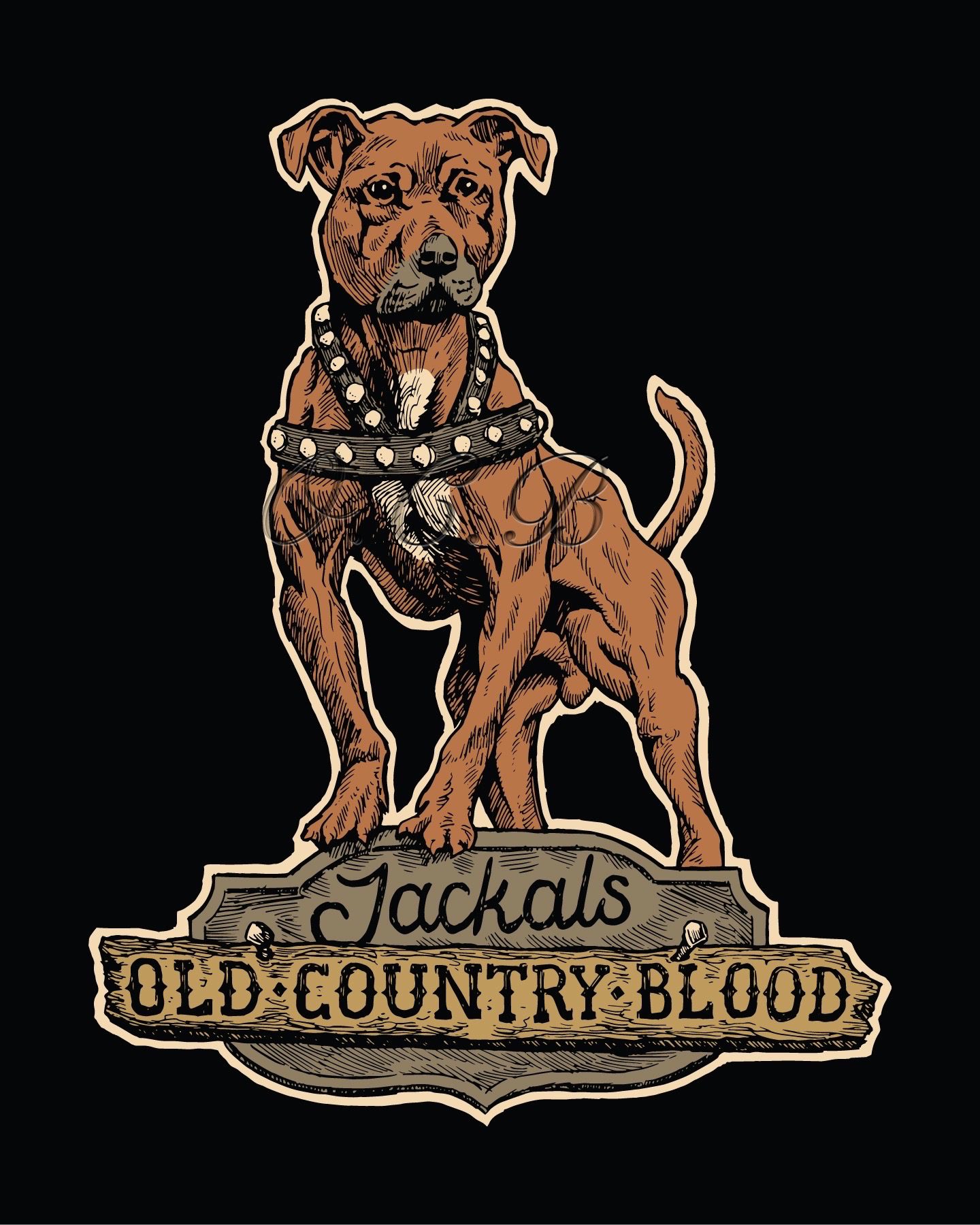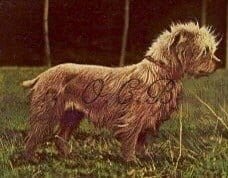The Wicklow mountains have been the home of a type of Terrier that has existed in Ireland since the 1500’s. A strong, thick set, low to the ground terrier that resembled its nemesis in more ways than one. This dog was owned and kept by the common Irish people who lived a basic existence in small thatched country houses. These dogs were the pride and joy of every Irish dogman who appreciated and valued the tremendous drive, strength, bravery and gameness that these dogs showed when working in the dark layer of their old enemy.
The people of the many Glens in the Wicklow Mountains on the east coast of Ireland preferred their terriers to be of the shorter legged variety compared to the longer legged types that were preferred in other regions of Ireland. It’s clear that there was a common ancestor between all of the four Terriers of Ireland and a variety of breeds were used in their creation. The original Irish Wolfhound, early Terriers and early Bull Types, were all believed to have been used to create these fighting terriers of Ireland. As I mention in my book, the Irish were very limited to what pure dogs they could own during British rule and therefore, they had to create a type of dog from what ever they could get their hands on and that also blended in without bringing any unnecessary attention from the British.
There is a lot more to the history of Irish Terriers and they are a lot more intertwined than many will have you believe. There is so many different theories on the history of the Irish Terrier breeds that I’ve lost count and forgotten some of the more mythical theories that some people have come up with. It’s well known that through out modern times all four have shown their connection to each other. Irish Terriers have been born with blue and Black and Tan coats, Glens have been born with long legs, Kerry’s have been born with Black and Tan coats and Wheatens have been born with short legs and with blue coats. It’s well known that before and even after the Glen and Wheaten were offIcially recognised by the IKC both types were sometimes being born in the same litters. This leads many people to believe today that the breeders that bred for the long legged types went on to create the Wheaten Terrier and the breeders that bred for the short legged variety went on to create the Glen of Imaal Terrier. It’s clear that there has always been two types of terrier in Ireland, the short legged and the long legged types. It’s also worth mentioning that during Elizabeth the firsts reign, she hired French and Hessian mercenaries to put down a rebellion in Ireland and when it finished they were given land as payment in County Wicklow. It’s believed that some of the dogs they took with them may have contributed to the small legged gene pool of terriers that was already in existence and much sought after in that region of the Emerald Isle.
There is also evidence suggesting that one of most famous Glen of Imaal Terriers in the 1950s ‘Fearless Dan’, had blood from a variety of different working breeds. It’s claimed that his sire ‘Tinahelly Lad’ had some old Irish Terrier blood as well as some Staffordshire Bull Terrier blood. His dam was a long legged wheaten coloured bitch which is believed to have had some Kerry Blue Terrier and English Bull Terrier blood. The first Glen registered with the English KC in the late 1950’s was full of dogs from the famous Hacketstown prefix, the Hacketstown line was a renown working line of Wheaten Terriers. I have also been told many stories of Staffordshire Bull Terrier and English Bull Terrier blood being added to the Glen over the years by working dog men and even some show breeders who feared that the Glen was losing its way.
The early Glen of Imaal Terrier was a slightly taller terrier that was used for a multitude of tasks around the farm but the breed got its notoriety for being a dog capable of competing against Badgers. A dog capable of a such a feat had to be an extremely strong hardy animal and the people of Wicklow didn’t demand anything less than toughness, as merely living in a such a remote, rocky and weather ridden place demanded only the toughest of dogs and people. In the 1920’s when the IKC began running the Irish Trials, the Irish Terrier breeds were expected to prove their worth in the field before being able to become champions in the show ring. It was this that changed all of the Irish Terrier breeds forever as they were no longer being bred to be a Jack of all trades but were now being specifically and solely bred to prove their worth as strong dogs in the trials. The Glen became heavier, stockier and shorter on the leg whilst both the Glen and Wheaten had a change in temperament and disposition that was now focus on one job and one job only. The reason that the IKC began the Irish trials was so that Irish Terrier breeds could continue to be worked and keep their much admired firey traits. At the time there was a lot of discussions around what test the IKC would use, as every breeder wanted to prove their dogs qualities in different ways. Fighting and baiting sports had long been outlawed and with the ever growing animal rights laws the IKC was restricted to what test they could create that was within the law. The Irish Trials were governed by very strict rules which had to be abided by and on the few occasions that they weren’t abided by the IKC landed themselves in trouble with the law.
I know it’s hard to imagine today’s Glen as a multi functional breed in its current form but I don’t think it’s to far fetch to imagine a slightly lighter, slightly longer legged dog running around the farm catching rats, controlling livestock, protecting the home stead and doing a bit of hunting. Irish farmers couldn’t afford to keep a dog for every role they needed doing, they required a dog that did a little bit of everything. There are other breeds like the Welsh Corgi that despite their short stature, have also proved to be very useful dogs around farms for many many years.
There seems to be a rising interest in the Glen in the last few years which is great to see but it also raises concerns as the number of good examples has drastically reduced in the last 10-20 years. Apart from the odd one here or there most are now show dogs. I just hope that the right people are getting involved with the breed with the view to better the Glen and not with the view to better their collection of pounds and dollars. If the reader hasn’t ever seen a Glen in the flesh, they really are a sight for sore eyes. They are strongly built and strong willed terrier that oozes old country Ireland. An ancient relic in type and temperament. A dog of years gone by with plenty of pluck and Irish fire running through its veins. A silent Glen was always preferred and heavily valued by Terrier men and if there was ever a breed that matches the old saying of “silent but deadly” it has to be the little strong terrier from the deep cloudy Glens of the Wicklow Mountains.


Beautiful little dog, I wish I could see one on person